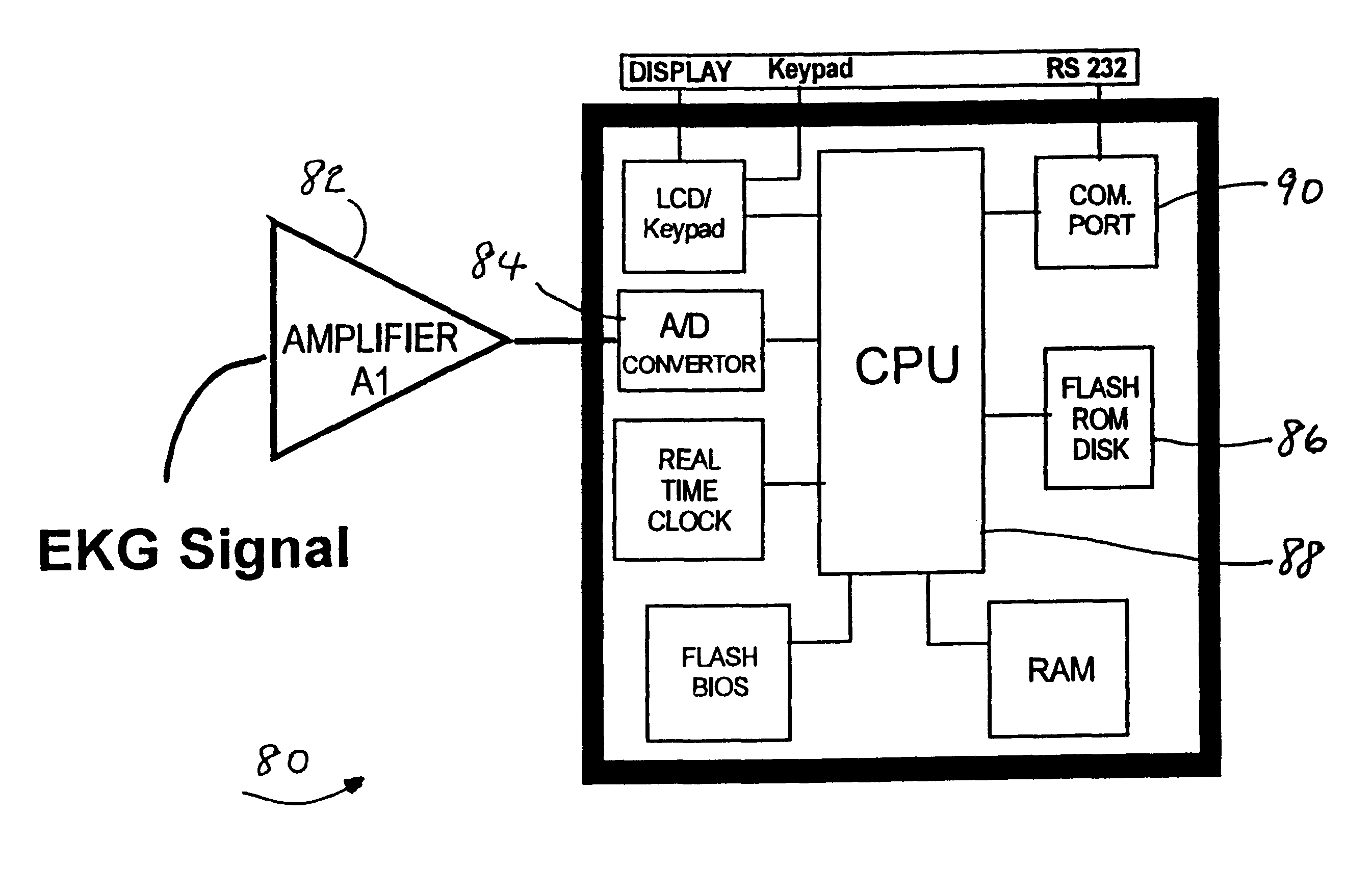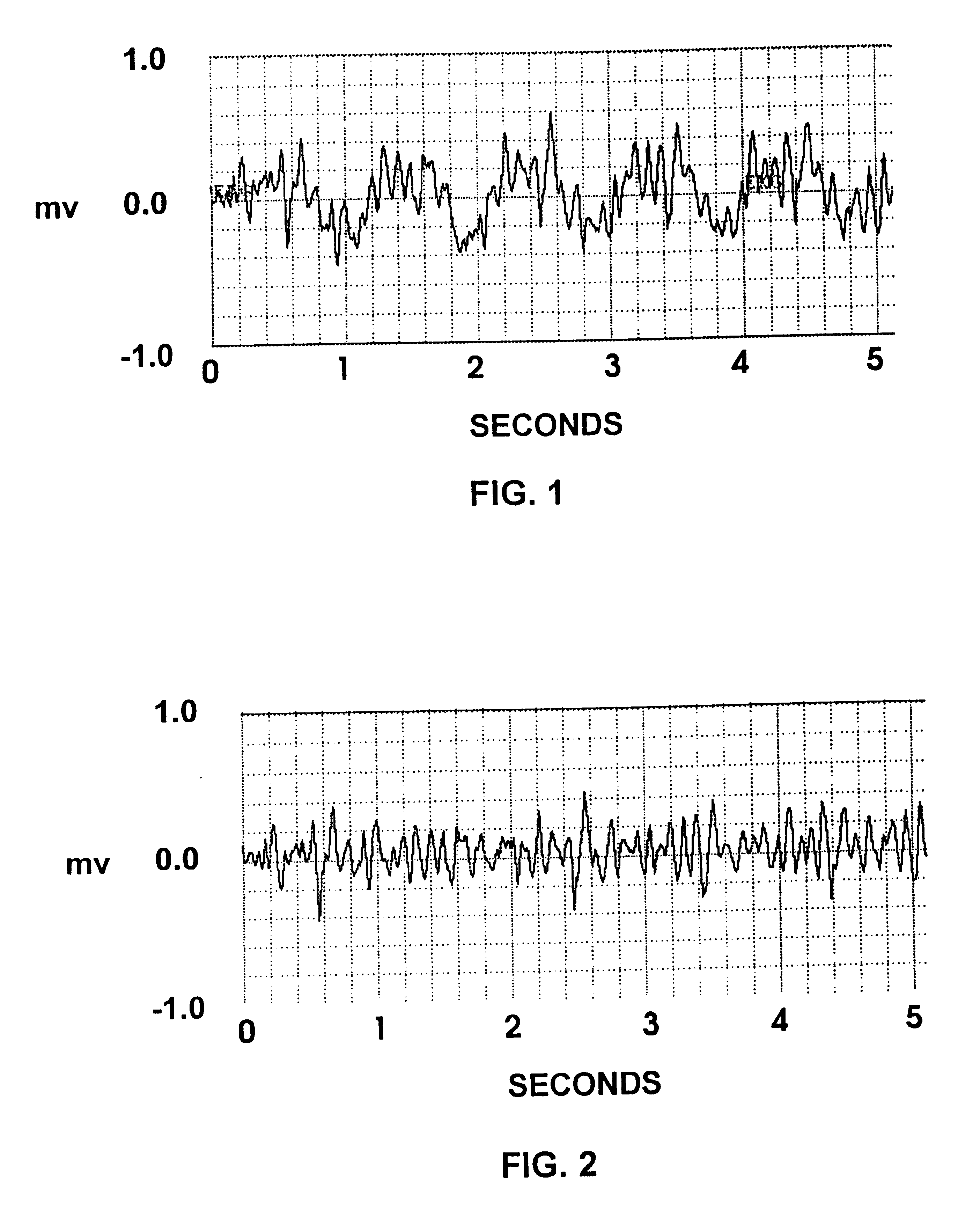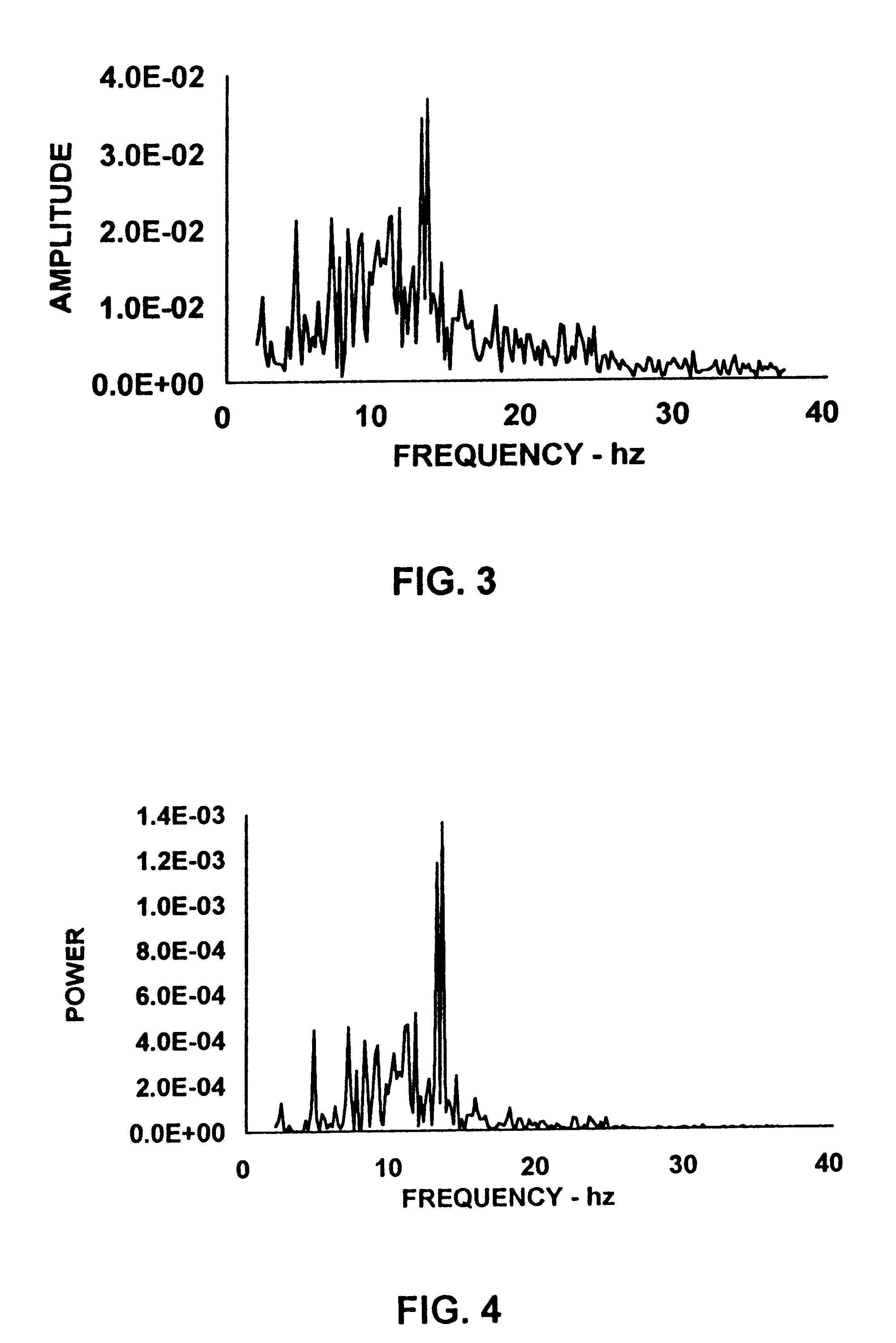Method and system for predicting the immediate success of a defibrillatory shock during cardiac arrest
a defibrillator and cardiac arrest technology, applied in the field of methods and systems for predicting the immediate success of a defibrillator during cardiac arrest, can solve the problems of reducing the likelihood of ultimate survival, affecting the effect of defibrillation, and affecting the effect of cardiac arres
- Summary
- Abstract
- Description
- Claims
- Application Information
AI Technical Summary
Benefits of technology
Problems solved by technology
Method used
Image
Examples
Embodiment Construction
FIG. 1 shows a typical tracing of an electrocardiogram (EKG) demonstrating ventricular fibrillation (VF) during closed chest cardiopulmonary resuscitation (CPR). The EKG was recorded at 300 Hz by an AT Codas digital acquisition system. A time of 0 to 5 seconds is represented along the x-axis and a voltage range of -1 to +1 millivolts is represented along the y-axis. The waveform of FIG. 1 has two primary components. Three major waves having a period of approximately 1 second are associated with closed chest compression during cardiopulmonary resuscitation (CPR). The multiple small wavelets represent ventricular fibrillation.
The present invention is based on the morphology of such EKG waveforms for establishing optimal timing of electrical defibrillation. Electrical shocks always have adverse affects on the myocardium which are compounded when they are repetitive. Electrical defibrillation should therefore be used only when the benefits outweigh the harm. Optimally, only one shock wi...
PUM
 Login to View More
Login to View More Abstract
Description
Claims
Application Information
 Login to View More
Login to View More - R&D
- Intellectual Property
- Life Sciences
- Materials
- Tech Scout
- Unparalleled Data Quality
- Higher Quality Content
- 60% Fewer Hallucinations
Browse by: Latest US Patents, China's latest patents, Technical Efficacy Thesaurus, Application Domain, Technology Topic, Popular Technical Reports.
© 2025 PatSnap. All rights reserved.Legal|Privacy policy|Modern Slavery Act Transparency Statement|Sitemap|About US| Contact US: help@patsnap.com



